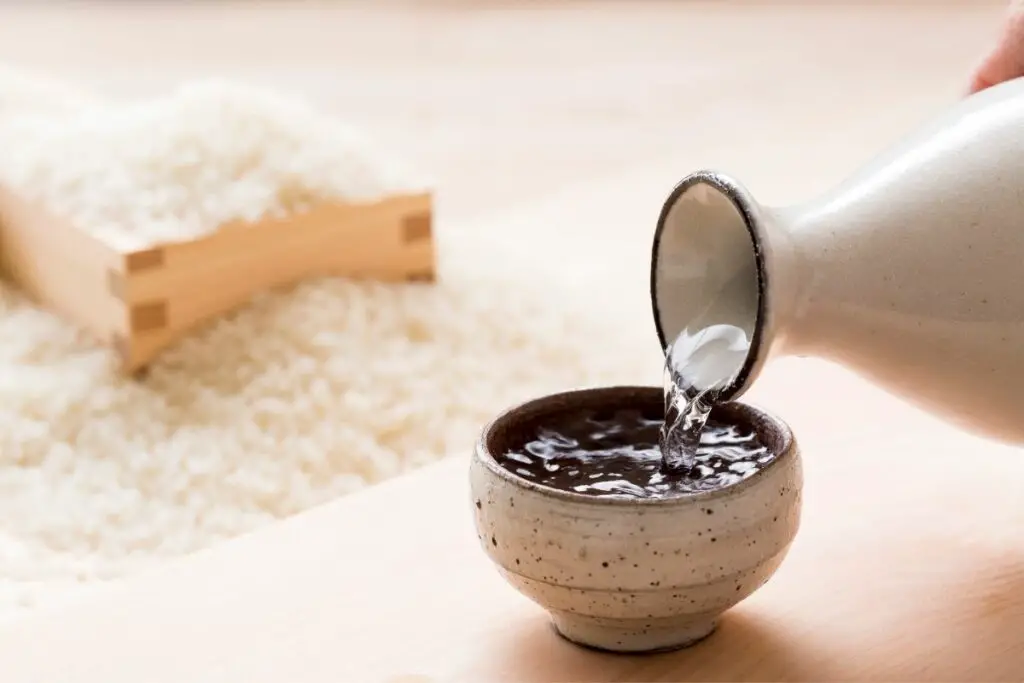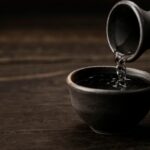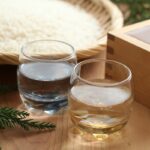Alcohol. Most cultures have one type of it. Whether it be the cool, creamy stouts of Ireland, the sharp, dry wines of Australia, or the toddy from India.
However, the further east you go, the less the alcohol is a kind of heavy beer guzzling kind and more of a sipping drink.
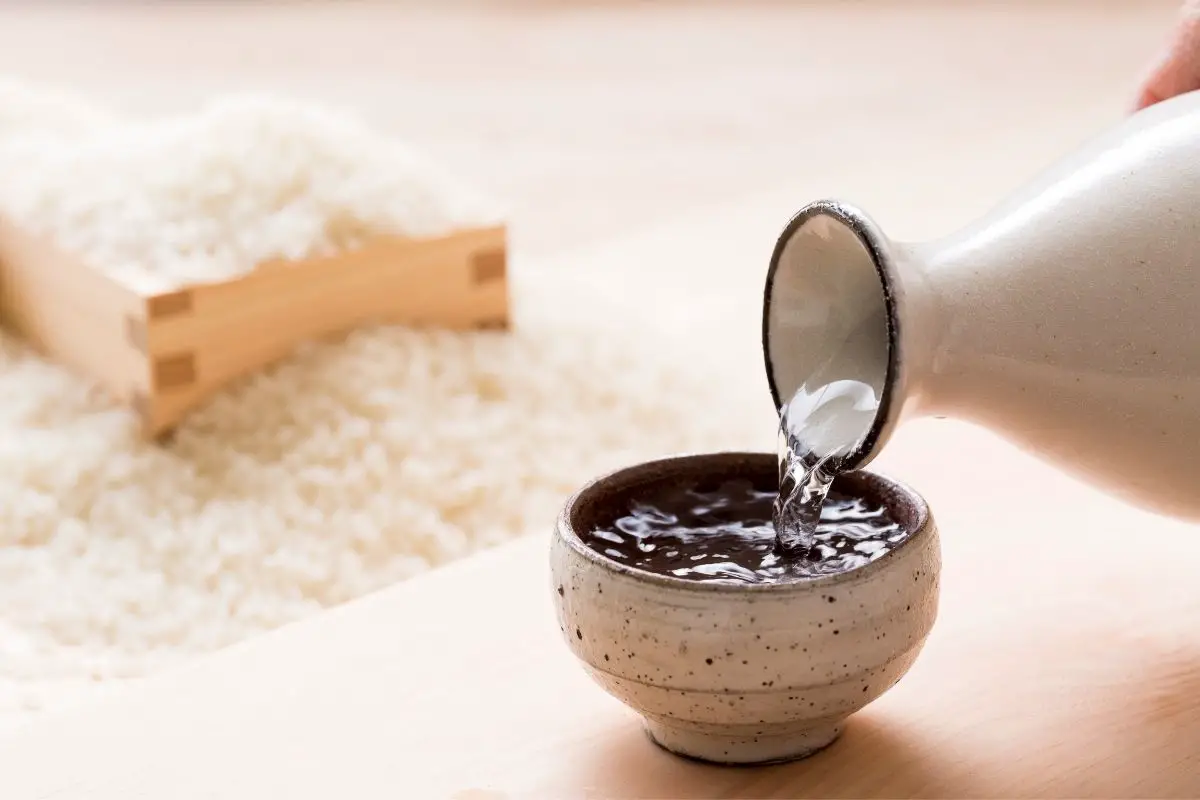
This is particularly true in Japan where – even though they have many native brewed beers and distilled whiskeys (see also ‘How To Drink Japanese Whisky‘) – they are most commonly known, at least to other cultures, to make sake.
Sake is a light and refreshing drink that is sipped on cool winter evenings and through bright summer days.
However, even if we know of the drink, that doesn’t mean we know much about the drink. We know it is from Japan, but not really how it is made or, most importantly, what it is made of.
In this article, we seek to answer this question of what sake is made of and explore the drink, so you don’t have to.
What Is Sake?
Sake is actually a fermented drink made from rice. This may seem strange to some people, but a lot of our alcoholic drinks come from fermented grains and fruits (see also, ‘Why is Fruit so Expensive in Japan?‘) of some kind. For example, beer is made of grains and hops.
However, when brewing sake, there are some things to think about first. Number one is that you need the right kind of rice.
Japanese people are serious about rice, and the only right rice for brewing sake is ‘shuzo-kotekimai’ (which can be very roughly translated as ‘brewing rice’).
The reason for this is that this type of rice has a larger starchy core than other kinds of rice.
Typically, this starchy core makes up to 70% of the overall grain of the brewing rice. This starchy core is perfect for brewing, and so having more of it is ideal.
Number two is that you need water, a lot of clean, fresh water. Normally, about ten times the amount of water to rice.
It needs to be clean and fresh, as the water will affect the taste of the sake at the end of the process (see also, ‘What Does Sake Taste Like?‘).
Number three is the presence of koji. Koji is a mold that is used throughout East Asian cooking.
It is grown on steamed rice that has been left, which allows the koji to grow, multiply, and eventually ferment the rice. Koji is used in the manufacture of tofu and miso, as well as sake.
The process is long, but by combining all three of these ingredients in the right way, with the right cooking methods, you will eventually end up with grade A sake.
History Of Sake
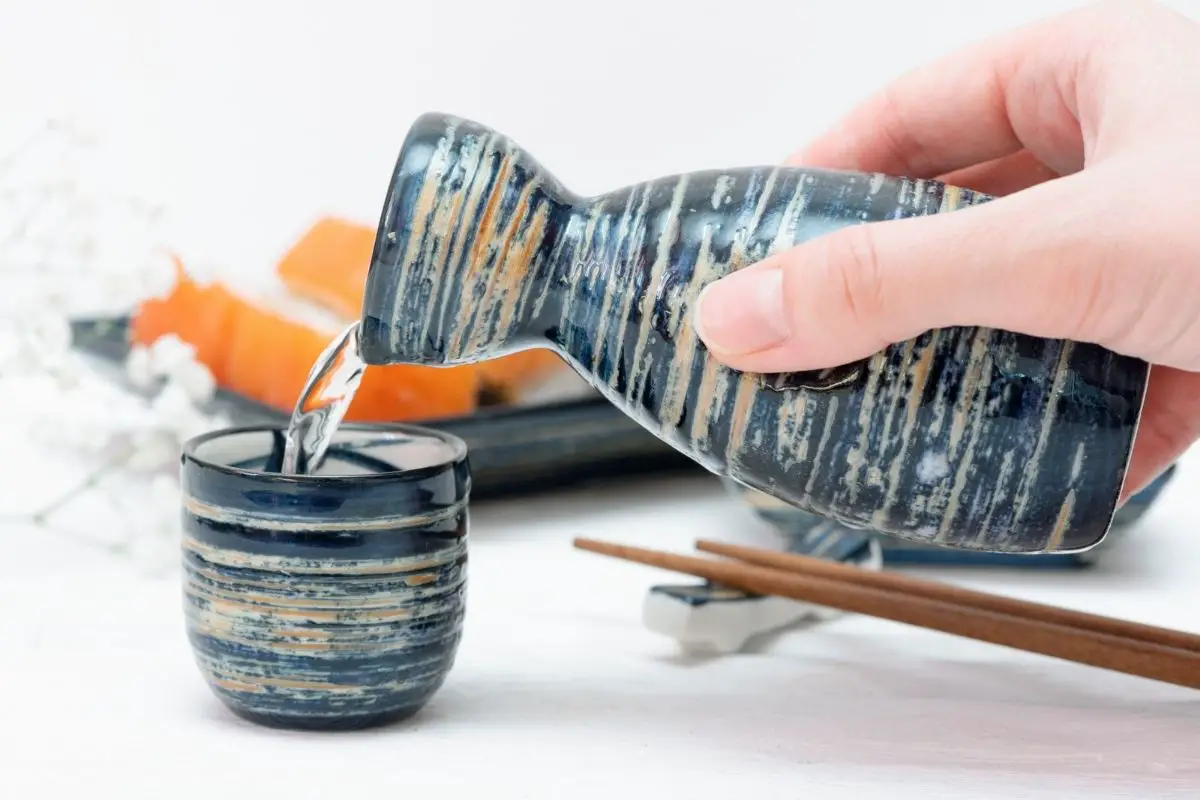
Sake is traced back to early Japanese history and is in fact mentioned in the ‘Kojiki’, Japan’s first written historical record in 600 CE.
For much of its early history, sake was produced and run as a government monopoly, but in the 10th century shrines and temples began producing it en masse for the public.
These religious places became the go-to places to get sake for the next 500 years, adding a certain mystical element to the drink.
By the turn of the Meiji Restoration in 1868, the government allowed anyone with the cash and the knowledge to open sake breweries in the country.
This opened the door for thousands of new breweries across the country, from mum and pop style places to national institutions, with the government levying a sake tax on all of them that continues to this day, bringing wealth to the government through the operation.
Now, the sake trade has spread all over the world with breweries existing in Europe, China, South America, and Australia, as well as Japan.
The drink (see also our article on Ramune) has become synonymous with Japanese culture and is beloved by many.
Is Sake Popular In Japan?
Yes, yes, yes! Japan has many other alcoholic beverages, but when it comes to sake, everyone wants in.
Perhaps there is something special about the drink, or perhaps it is the fact that it can be made at home easily.
People love the easy drinking of sake, and there are many sake brewing companies popping up all over Japan.
The most popular types of sake in Japan are: Junmai and every town has their own Jizake, or local sake that they are incredibly proud of.
Junmai is a great tasting and easy drinking type of sake. The rough translation of Junmai is ‘pure’ and that is what you expect from the sake.
Junmai is kind of what we would consider ‘organic’ in the west, made just from the most natural ingredients with no additives.
It is considered healthier and more authentic by most sake lovers, and the craft of making it is pursued rigorously by a select few.
Is Sake Popular In Other Countries?
Sake is a very popular drink in Japan, but it is gaining popularity in the rest of the world as well.
In the Western countries, sake is usually imported from the Asian countries with the highest tax rates, but there are now many small sake breweries popping up in the Western countries as well. These are often of the Junmai variety.
There are many sake varieties, and each has its own specific taste. People in other parts of the world may not know about the varieties of sake, mainly due to lack of exposure to it.
However, as people get to know more about sake and try different varieties, they may start to prefer one over the others.
Is Sake Good For You?
Sake is usually referred to as a “dry” alcoholic beverage, as it is lower in “sweet” content than other drinks.
However, there is no specific amount of alcohol in each type of sake, and it is very easy to drink too much.
You can get a general idea of how much you should drink by looking up your favorite type of sake, finding out how much alcohol it is per bottle, and then how much a typical bottle of beer is.
You can easily figure out how much sake you need to drink to stay within the safe drinking limits.
But apart from safety and legal guidance, alcohol is alcohol. It is not necessarily good or bad for you and only if you indulge in it with excess, then you may have some problems.
So, treat it as you would other alcohol: with excitement and fun that is tempered by caution and restraint.
Conclusion
Sake in its purest form is made of steamed and fermented rice, water, and koji mold.
This may not seem like much, but brewed and combined in the right way makes one of the world’s true great delights. It is the drink that refreshes you, no matter where you are.

